If you buy through our links, we may earn an affiliate commission. This supports our mission to get more people active and outside.Learn about Outside Online's affiliate link policy
The Best Cross-Country Boots and Accessories of 2026
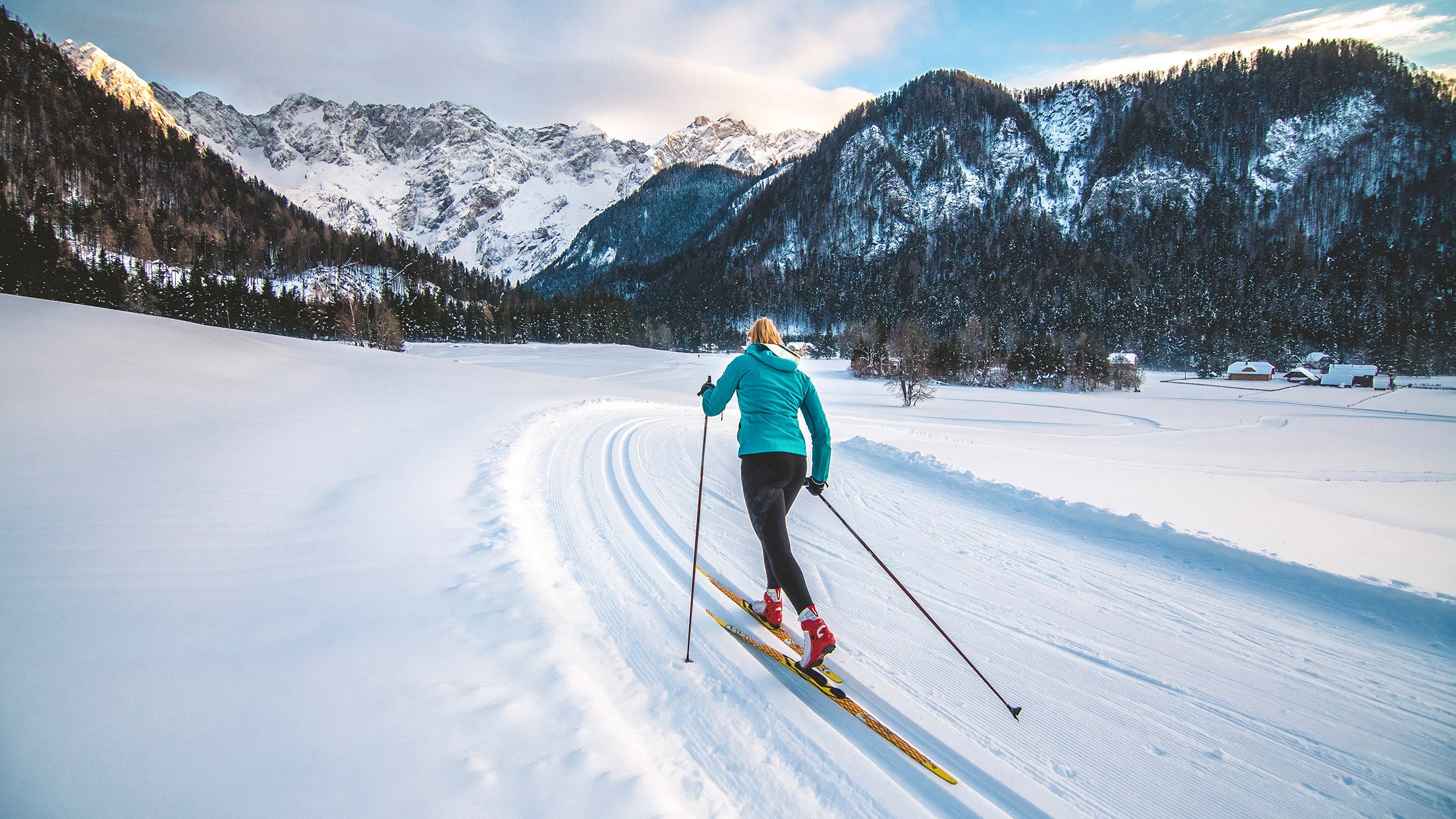
(Photo: Ziga Plahutar/Getty)
Table of Contents
The perennial joy and frustration of cross-country skiing is that every day on the track brings varying conditions. There are natural elements to consider, including temperature, wind, and snow. Then there are psychological factors, like dreading the transition between warm car and freezing trail. Wear too little and there’s a chance of frostbite or hypothermia—especially during a long ski. Wear too much, and you’ll sweat, then overheat, and eventually freeze.
The best way to avoid this over-under-dressing dilemma is to follow three simple rules: Always wear breathable, wicking layers. On warmer days, less is always more. And always keep a change of clothes and a plush puffy in the car. Our four testers—who, collectively, have been skiing for almost two centuries—put more than 100 pieces of gear to the test in Minnesota and Wisconsin in search of the best ski accessories for gliding through winter.
Best XC Ski Accessories: At a Glance
- Best Skate-Ski Boot: Fischer Speedmax 7 ($525)
- Best XC Touring Boot: Rossignol XP5 ($280)
- Best Skate-Ski Pole: Salomon S-Max Carbon Click Pole ($200)
- Best Sunglasses: Rudy Project Turbolence ($268)
- Best Insulated Jacket: Cotopaxi Pacaya 2.0 ($225)
- Best Aprés Ski Jacket: Klättermusen Lopt Hood Jacket ($460)
- Best Midlayer: Patagonia NanoAir Ultralight Pullover ($199)
- Best Base Layer: Fjallraven Abisko Wool LS ($75)
- Best Men’s Training Pants: Craft ADV ($130)
- Best Ski Sock: Darn Tough Snowburst ($32)
- Best Ski Race Mitt: Lill-Sport Celsius ($64)
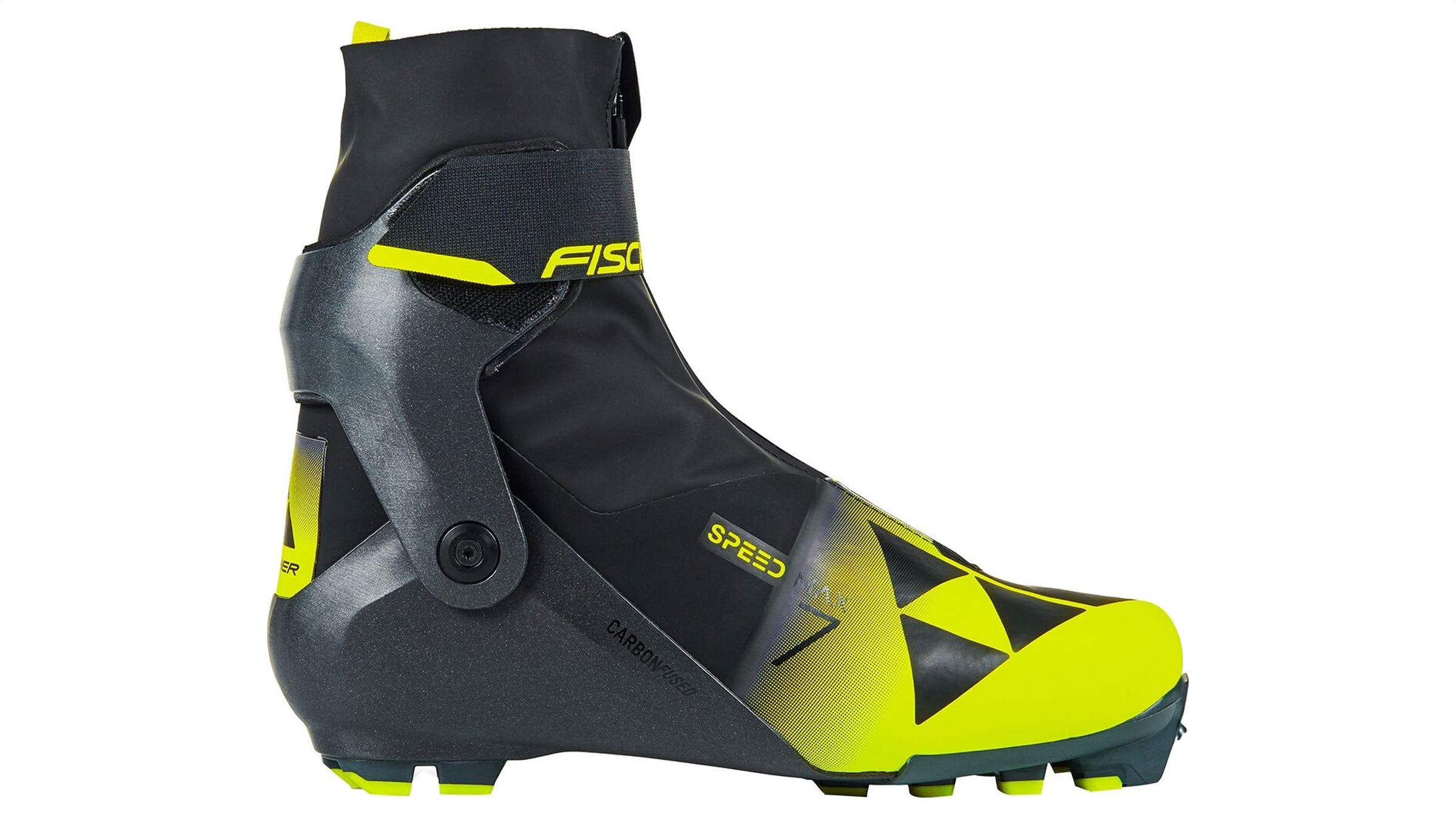
Best Skate-Ski Boot
Fischer Speedmax 7
Weight: 570 g (size 42)
Sizes: 38 to 51, black version; 36 to 43, white version
Pros and Cons
+ Most comfortable high-performance race skate boot we tested
+ A good fit for wide feet
– Not a good fit for narrow feet
– Cuff not as supportive as the Speedmax 9
Fischer’s new Speedmax 7 hit the sweet spot for our testers in that it was warm and comfortable but still stiff enough to power the ski. It’s also $375 less expensive than Fischer’s top-of-the-line Speedmax 9, which we also tested. So how does the 7 differ from its more expensive sibling? First, it’s about 150 grams heavier per pair (slightly less than a quarter of a pound). That weight differential is mainly due to a larger internal height and width (which increases volume) and a fused carbon upper cuff, chassis, and sole, rather than carbon fiber. This may seem like splitting hairs to the average consumer, but there is a difference: The two materials offer roughly the same strength and stiffness, but fused carbon adds bulk and weight because it’s made in a mold.
Unlike the Speedmax 9, which uses a two-BOA lacing system for a more precise fit (which you’ll also see in alpine boots), the Speedmax 7 uses a more traditional locking lace system reinforced by a sealed zipper. The materials in the upper are thermomoldable with heat and special tooling. But even without custom molding, our testers reported that the 7 fit like a glove, and was the warmest and most comfortable of the half-dozen we tested.
One tester wore the Speedmax 7 and 9 on subsequent 8K loops during a nine-degree day for a total of 16 kilometers. Both had a wider toebox than the tester would have liked for their narrow foot, but the 7 felt more comfortable than the 9—the lightest boots lack creature comforts, like insulation. At the same time, the 7 felt only a hair heavier and less stiff than its more expensive sibling. And while the 9’s new double-BOA system made it easy to adjust on the fly, every tester reported that the 9 gave them cold feet, even on relatively balmy days when the temp rose into the 20s. Technical aspects aside, one of the best features on the 7 was the set of yellow loops in the front and back of the boot that made it easy to slip into and yank off after a long ski. Sometimes, it’s the little things.
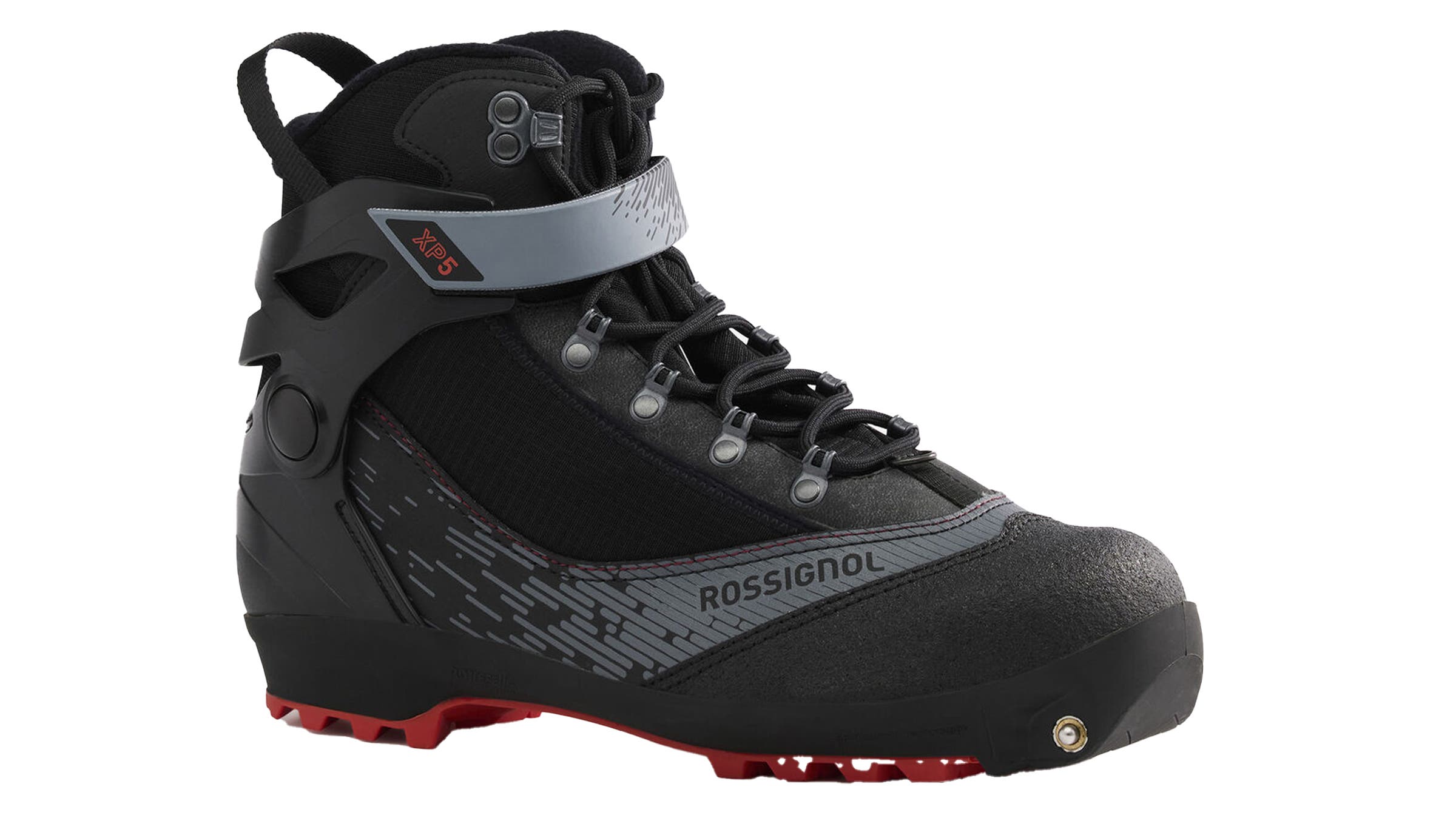
Best XC Ski Boot
Rossignol XP5 Cross Country Ski Boots
Weight: 1,400 g/ pair (size 42)
Sizes: 36-48 EU (unisex)
Pros and Cons
+ Very warm
+ Improved control on wide skis
– Too roomy for narrow feet
Neither overbuilt nor ultralight, the XP5 strikes a crowd-pleasing balance of warmth, support, and efficiency. This amply-insulated boot offers an appealingly affordable interface with Rottefella’s acclaimed Xplore ski binding (which debuted in winter 2021-22 and adapts alpine touring technology to cross-country skiing). Testers issued high praise for the boot’s all-day comfort and precise steering of wide (85 to 104mm) touring planks. “These felt similar to my alpine touring boots in that I enjoyed excellent control through the toe while turning, even on steeps,” one reported after multiple days of exploration around Maine’s Medawisla Hut.
Using the same last as Rossignol’s high-performance XP12 ski boots, the XP5 stabilizes the back of the foot using a heel counter that’s similar in shape, but attached externally rather than internally as it is on the XP12. Its lacing is also external, with a mid-height cuff that’s shorter than most Xplore-compatible boots. These modifications sacrifice a measure of support and control, yet the XP5 provided everything that intermediate skiers wanted when navigating easy-to-advanced terrain. Threading through moderate-angle trees to plunder fresh February powder in Maine, one tester enjoyed increased confidence in her turns and warm toes over a five-hour tour in ten-degree temperatures.
A note on fit: The XP5 suits average- to high-volume feet, but testers with slender feet or narrow heels felt too much slippage in this boot for optimal control. And experts may prefer a taller, more supportive boot with multiple adjustability zones (the XP5 uses basic lacing and an ankle strap). But for pleasure-cruising through mellow, ungroomed winter playgrounds, this boot provides impressive performance for the sub-$300 price.
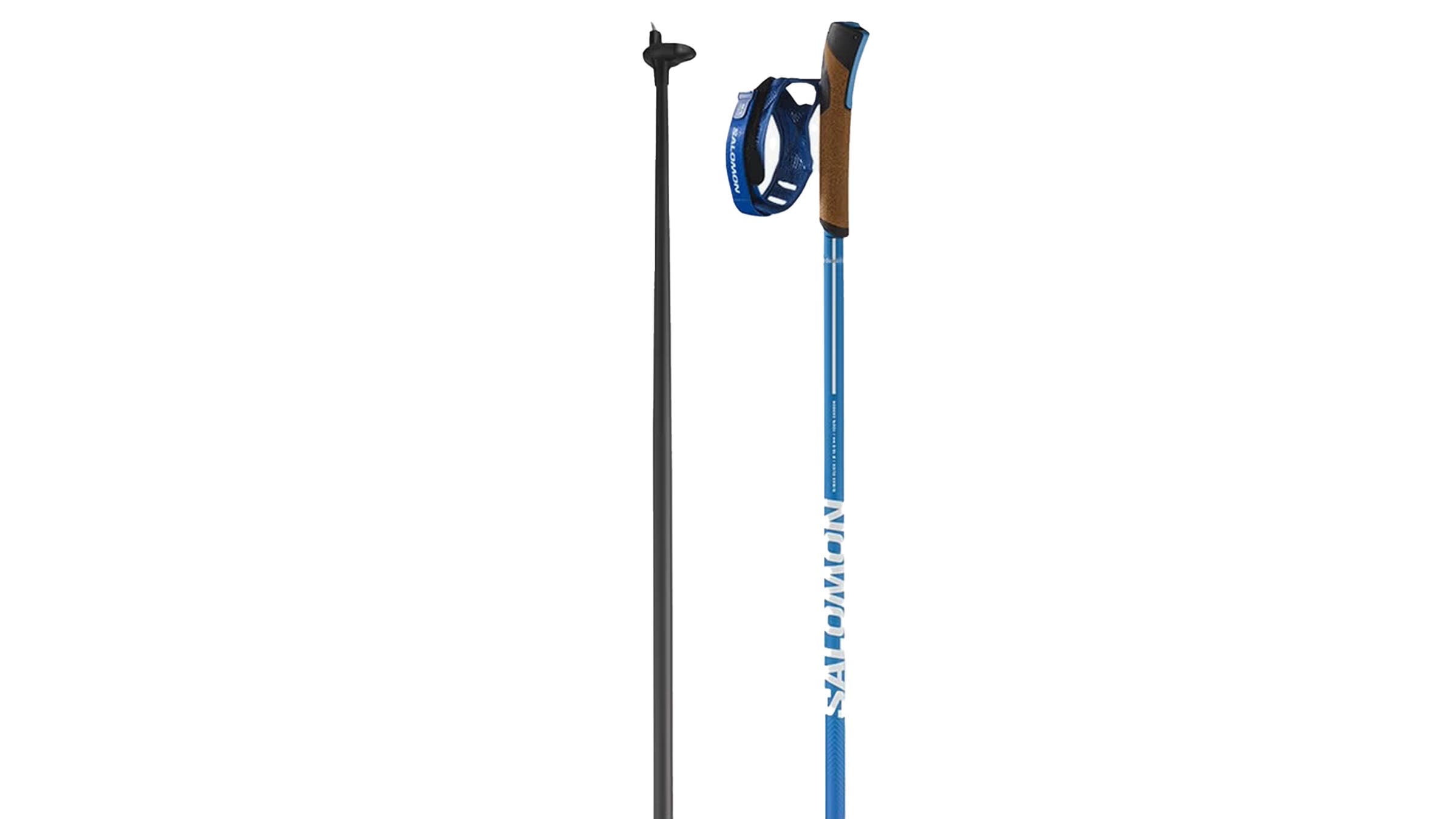
Best Ski Pole
Salomon S-Max Carbon Click Pole
Weight: 165 g
Pros and Cons
+ Lightweight
+ Strong
+ Adjustable hand strap
– Pricey
After hours of testing and analysis, our team had no other choice but to once again recognize the S-Max Carbon Click as one of the best ski accessories for cross-country treks. Not only is it an excellent lightweight pole, it also has a grip that quickly and easily disengages on the fly.
The carbon-shafted S-Lab Carbon Click is, first and foremost, strong and light. It even survived a messy yard sale of a crash on bulletproof hardpack. But it also offers a few handy extra features that make skiing more efficient. The hand strap clicks in and out with a single push of a button on the grip, so you can hydrate, remove your skis, or fiddle with your phone easily during ski sessions. Another bonus: The Velcro hand strap has a generous tab that’s easy to tighten while wearing gloves. Having that tight fit aids in more explosive power when pushing off.
The price is a little high for a mere pair of poles, but think about how much abuse these glorified sticks (and your poor shoulder) take over a full season.
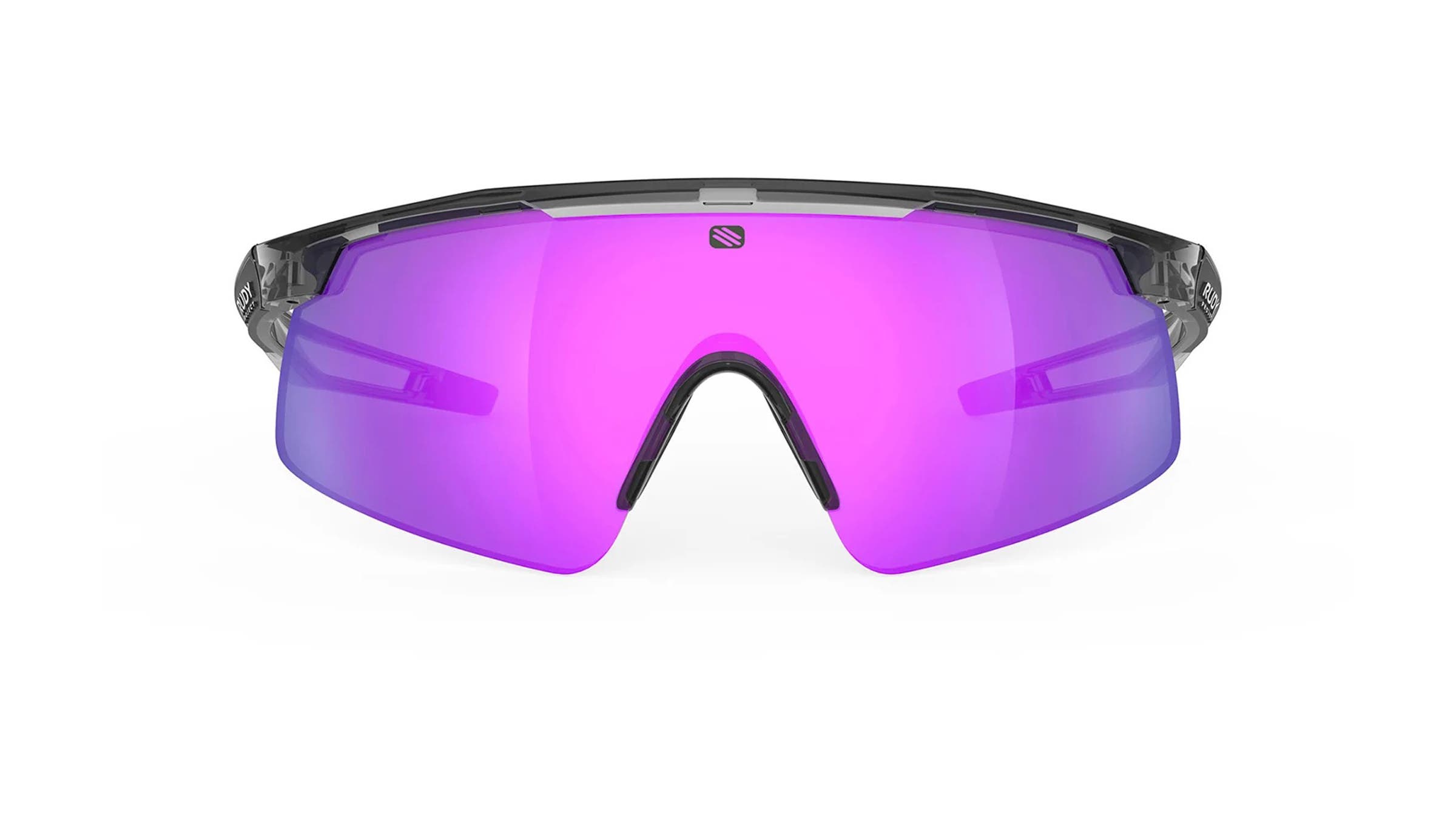
Best Sunglasses
Rudy Project Turbolence
Weight: 165 g
Pros and Cons
+ So comfortable you can’t feel them on your face.
+ Lightweight
– Pricey
Beyond skis, boots, and poles, a good pair of shades is the next most important piece of skate-skiing gear you’ll own. It’s the first line of defense for precious eyes while screaming downhill with in-your-face wind, snow, and cold. One tester wore the Turbolence sunglasses almost every day on the trail this winter—from full-sun days to heavy snow. The grippy but supple arms stayed put at the temple (worn most often over my neck gaiter). A foam strip along the top of the frame they tested stopped the sweat, and the ultra-wide cylindrical lens provided 100 percent UV protection, zero fogging, and a generous barrier against the aforementioned elements.
The number one reason, however, we loved these multisport glasses specifically for skate-skiing is that, in addition to polarized or mirrored lenses, they come in a photochromatic lens that adjusts as the light changes throughout the day. This is essential while skiing in flat light or in the twilight of deep winter. The other reason we loved them: They’re so comfortable that we forgot we were wearing them—the universal sign of an excellent pair of sunglasses.
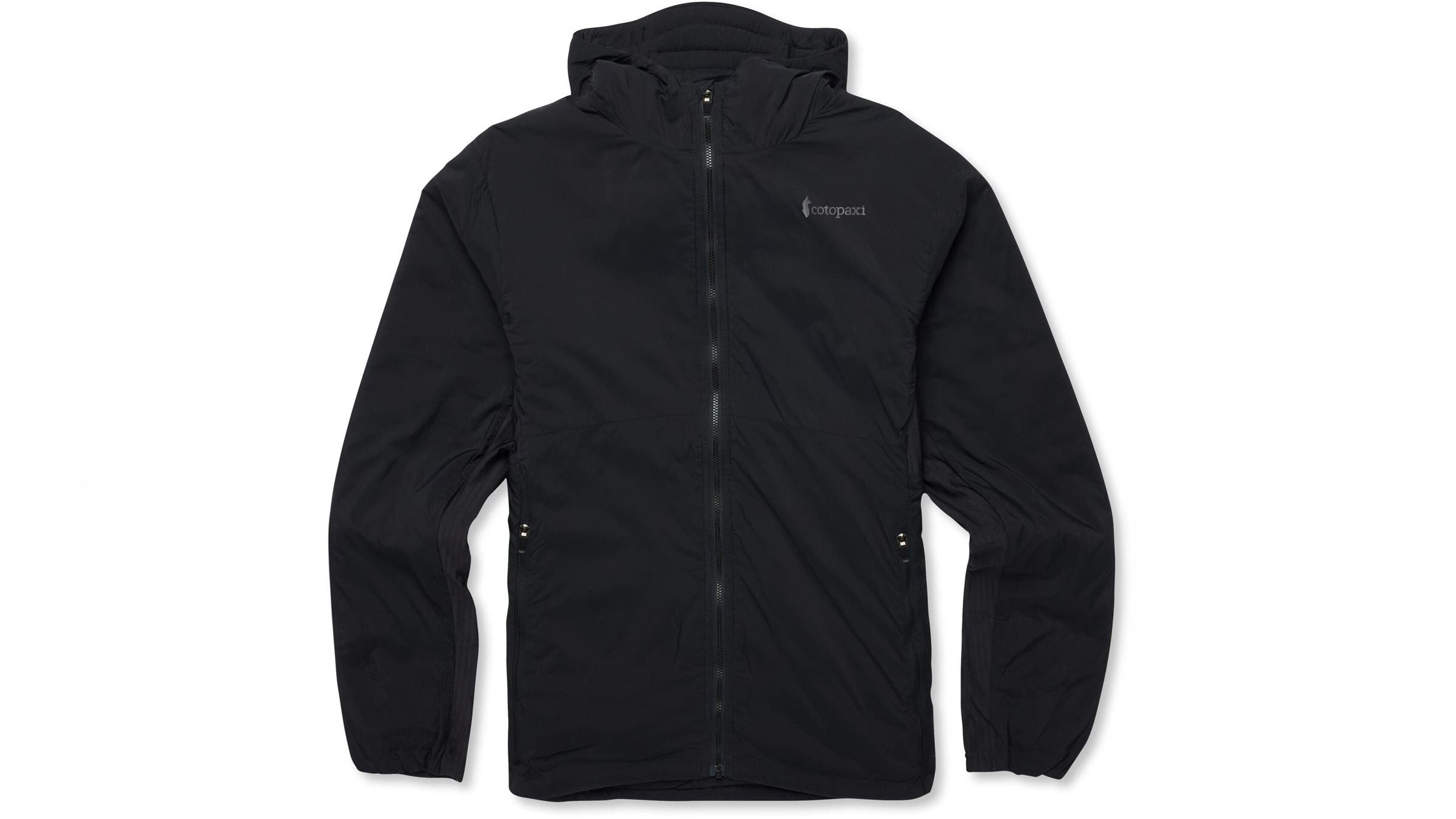
Best Insulated Jacket
Cotopaxi Pacaya 2.0 Insulated Hooded Jacket
Sizes: XS-XL (women’s); S-XXL (men’s)
Pros and Cons
+ Fitted hood didn’t blow off on the downhills
+ Roomy fit with unrestricted movement
– Too lightweight for 15 degrees and below
For the second year in a row, Cotopaxi won our testers’ hearts in the jacket category, an impressive feat for a brand that doesn’t make Nordic ski-specific gear. This Goldilocks of jackets—if worn in the 15- to 30-degree range—is not too hot, not too cold, and not too restrictive. The 100 percent recycled shell and recycled insulation made from pre-consumer wool scraps also beads and sheds precipitation when it starts to snow mid ski.
One tester gave it five out of five stars after wearing it while skating 30 kilometers on an 18-degree day on the Picnic Loop, a tough, hilly, 25-kilometer groomed skate and classic track through the northern Minnesota wilderness. The high zipper closed the neck and cinched the adjustable hood tight on a windy day, and three pockets—two exterior vertical pockets and one internal chest pocket—were big enough to evenly distribute her extra hat, snacks, and iPhone. “I wore this over two lighter-weight base layers and thought I might be too hot, but I wasn’t,” adds a tester, who used it for a 15-kilometer skate ski on a 17-degree day. “This was a really comfortable jacket that provided good, non-constricting movement.”
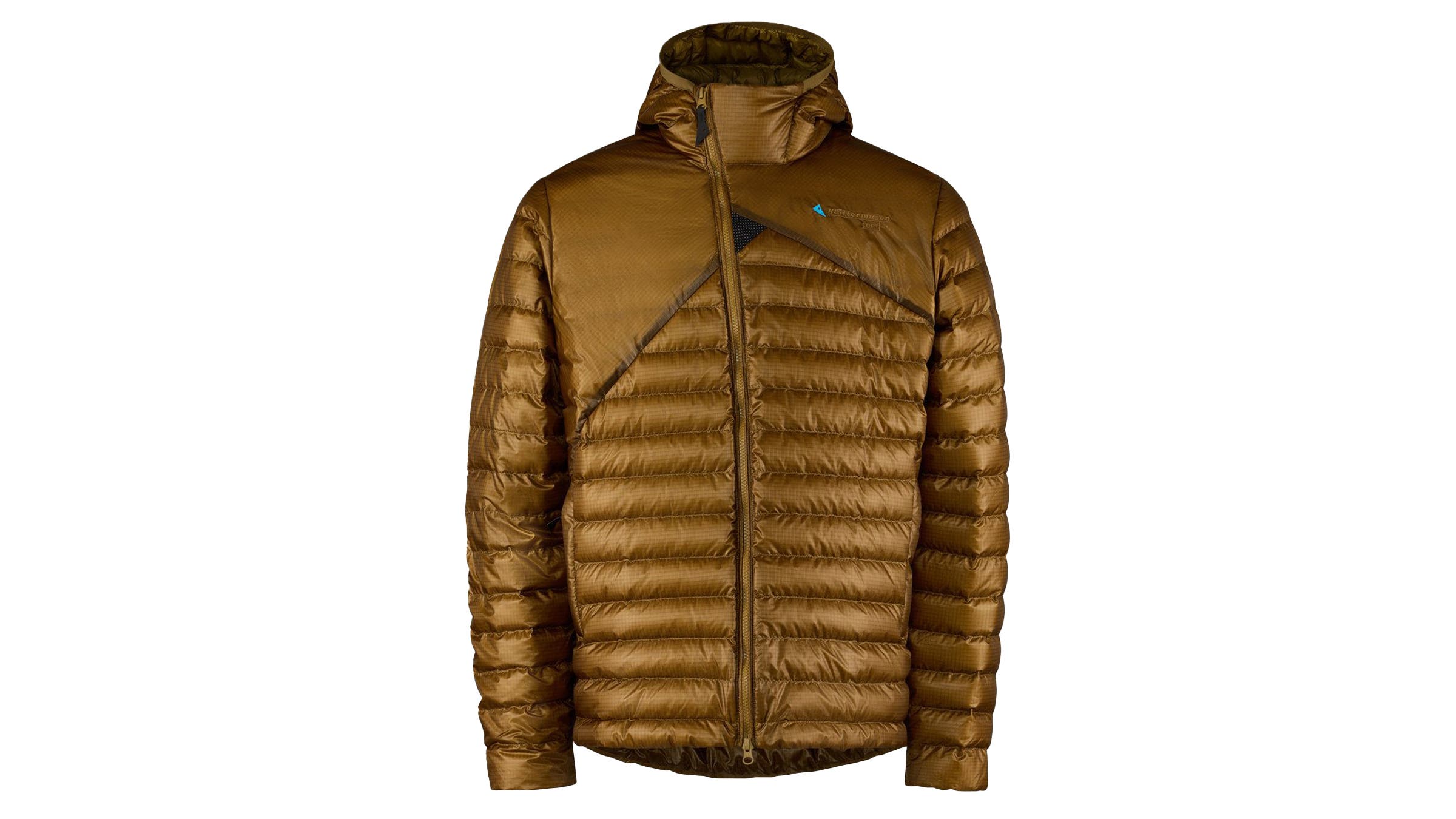
Best Aprés Ski Jacket
Klättermusen Lopt Hood Jacket
Sizes: XXS-XL (women’s); XS-XXL (men’s)
Pros and Cons
+ Durable
+ Looks sharp
– Pricey
– The cuffs aren’t well reinforced
Down puffers are essential year-round in northern Minnesota, but unless it’s well below zero (in which case most of us wouldn’t be out skate skiing because the snow would be like Styrofoam), a puffy is too hot to wear on trail. It is a must, however, to stash one in the car to throw on afterward.
What stood out about this hooded puffy, made by a Swedish mountaineering company, is its cozy 800-fill, goose-feather down. But we also liked the jacket’s durability, especially when juggling our sharp-tipped ski poles. Designed for the rigors of alpine skiing or mountaineering, its windproof, water-repellent fabric is made from a soft and smooth castor bean-based ripstop nylon fabric that makes it tough without adding extra weight. (At 389 grams in size small, the jacket weighs the same as a soccer ball, which admittedly, makes it heavier than the microlight puffs out there that are 100 grams lighter.)
For the heft, however, wearers get a snug, fitted hood (suitable for under a helmet) and double fabric at the shoulders to prevent abrasion and chaffing under a pack—all attributes that come in handy, especially if you happen to be into ski mountaineering. Testers were on the fence about the offset zipper that slants to the right at the neck, but it’s designed that way because there’s a soft and fuzzy chin-protective placket at the top, free of zipper interference.
“It’s a great pre/post-ski jacket and very cozy despite windy conditions,” reported one tester after wearing it on several blustery ten- to 15-degree days in a row. One particular perk was the generously sized zipper pulls, which made the puffer easy to close on a frosty day, even while wearing gloves.
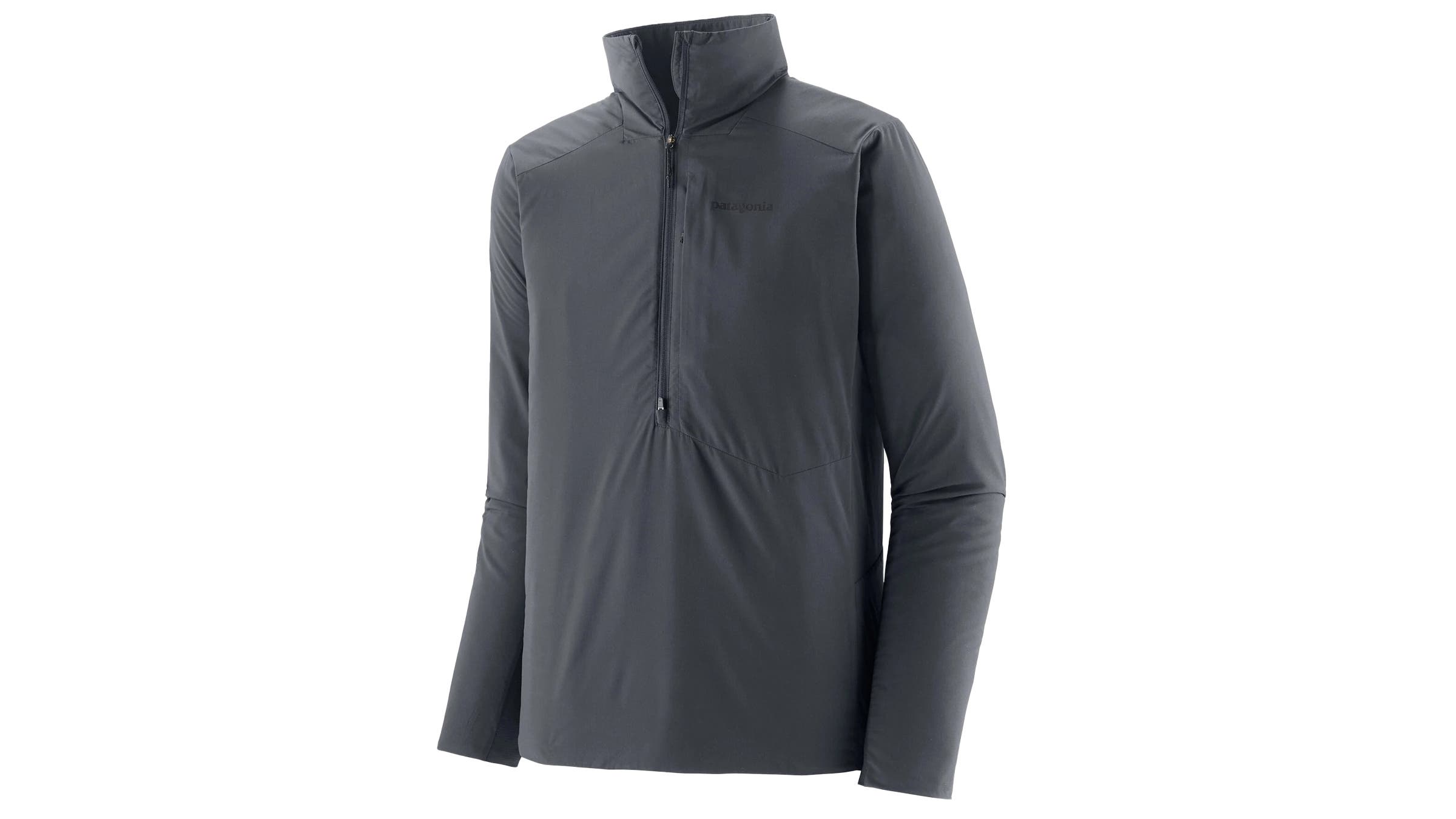
Best Midlayer
Patagonia NanoAir Ultralight Pullover
Sizes: XS to XXL
Pros and Cons
+ Weighs a featherlight 6.4 ounces
+ Excellent wind protection
– Fabric feels delicate (although no tester actually ripped it)
Spring skiing conditions eventually arrive, even in northern Minnesota. On those balmier 30-degree-and-above days, our testers gravitated toward Patagonia’s newest ultralight pullover, designed for climbing and mountaineering, that weighs the same as a hockey puck and scrunches down to that size, too.
The jacket feels as soft and simple as a cotton T-shirt, but there’s way more tech happening here. The collar, shoulders, upper arm, and chest are made from polyester fibers. For extra stretch and sweat-absorption, the lower arms are made from quick-drying Capilene Cool Lightweight fabric. The outer fabric is an ultralightweight, air-permeable fabric that has a DWR finish made without intentionally added PFCs or PFAS. More simply stated, the jacket punches way above its weight in warmth and wind protection.
With a deep zip almost to the belly button, a slight flare at the waist, and room in the sleeves and body, the jacket moved fluidly with one tester’s “imperfect skating technique” on a 37-degree day on an icy skate deck at Snowflake Nordic Center in Duluth. They also appreciated the roomy vertical-zip breast pocket for an iPhone.
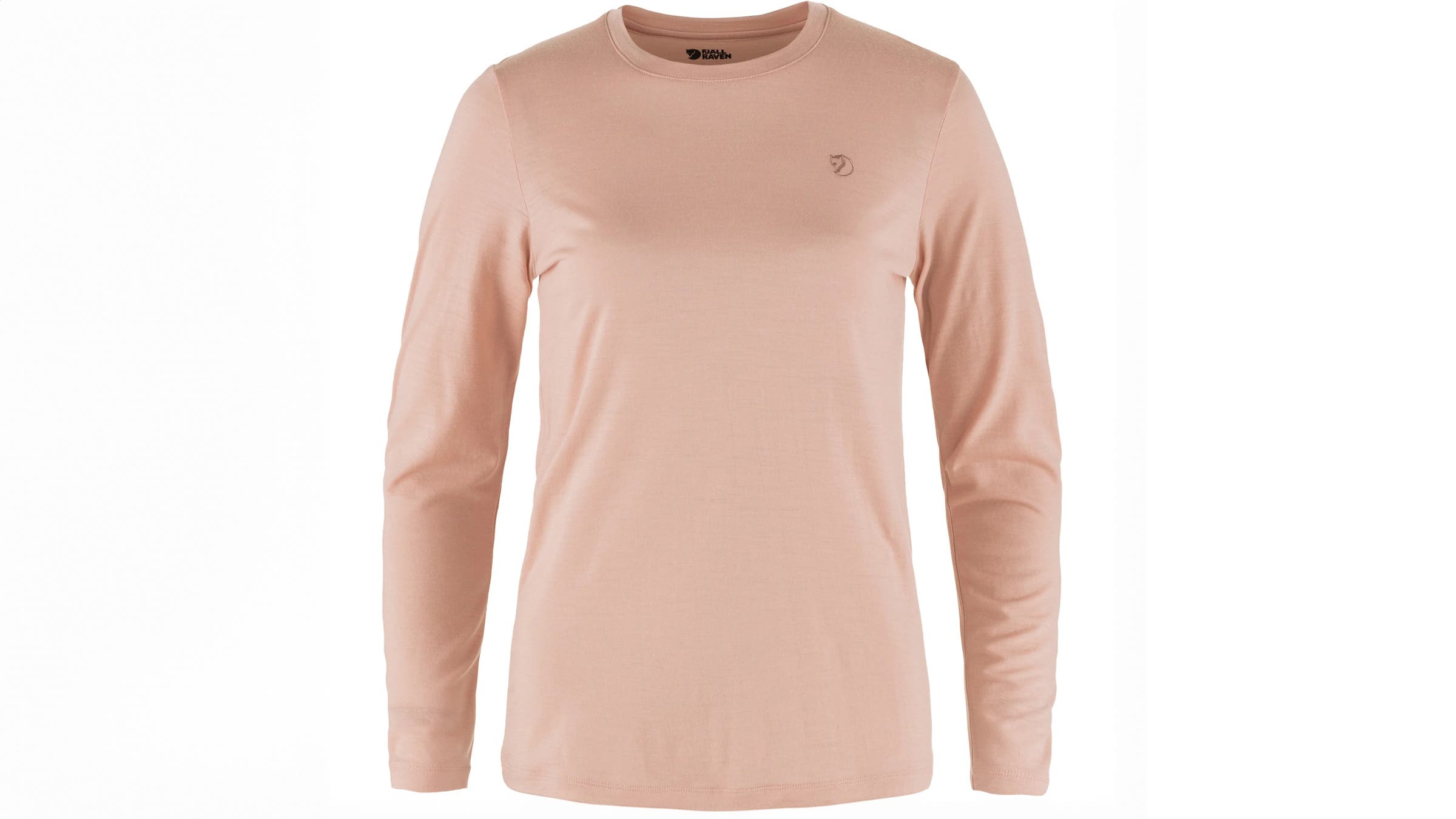
Best Base Layer
Fjällräven Abisko Wool LS
Weight: 125 g (women’s); 155 g (men’s)
Sizes: XXS-XXL (women’s); XS-XXXL (men’s)
Pros and Cons
+ Baby soft
– On the light side for sub-ten-degree days
Base layers are so ubiquitous and necessary for a sport like cross-country and skate skiing that one might think they would all feel the same—after all, they all have the same basic fit. But two words make this long-sleeve number stand out: soft and versatile.
Made from 50 percent merino wool and 50 percent polyester, the lightweight crew feels like a feathery cloud against the skin—it’s that soft and friction free. Because it’s also light and not too restrictive with a good range of motion, the Abisko Wool LS can be worn alone or on top of another base layer; our testers wore it solo in temps ranging from nine to 35 degrees. And since it’s made of wool, wicked sweat, and didn’t stink, there was no need to shed it immediately after skiing—an awesome perk on days where a crowded trailhead parking lot made it awkward to flash skin while changing in the car.
“I wore this as an underlayer in nine degrees and even though it wasn’t a very warm day, I found this weight was just right,” said a tester who spends hours after work decompressing by doing laps on 15K of skate and classic trails at Lester Park in Duluth, Minnesota. “It’s a very versatile, comfortable staple.”
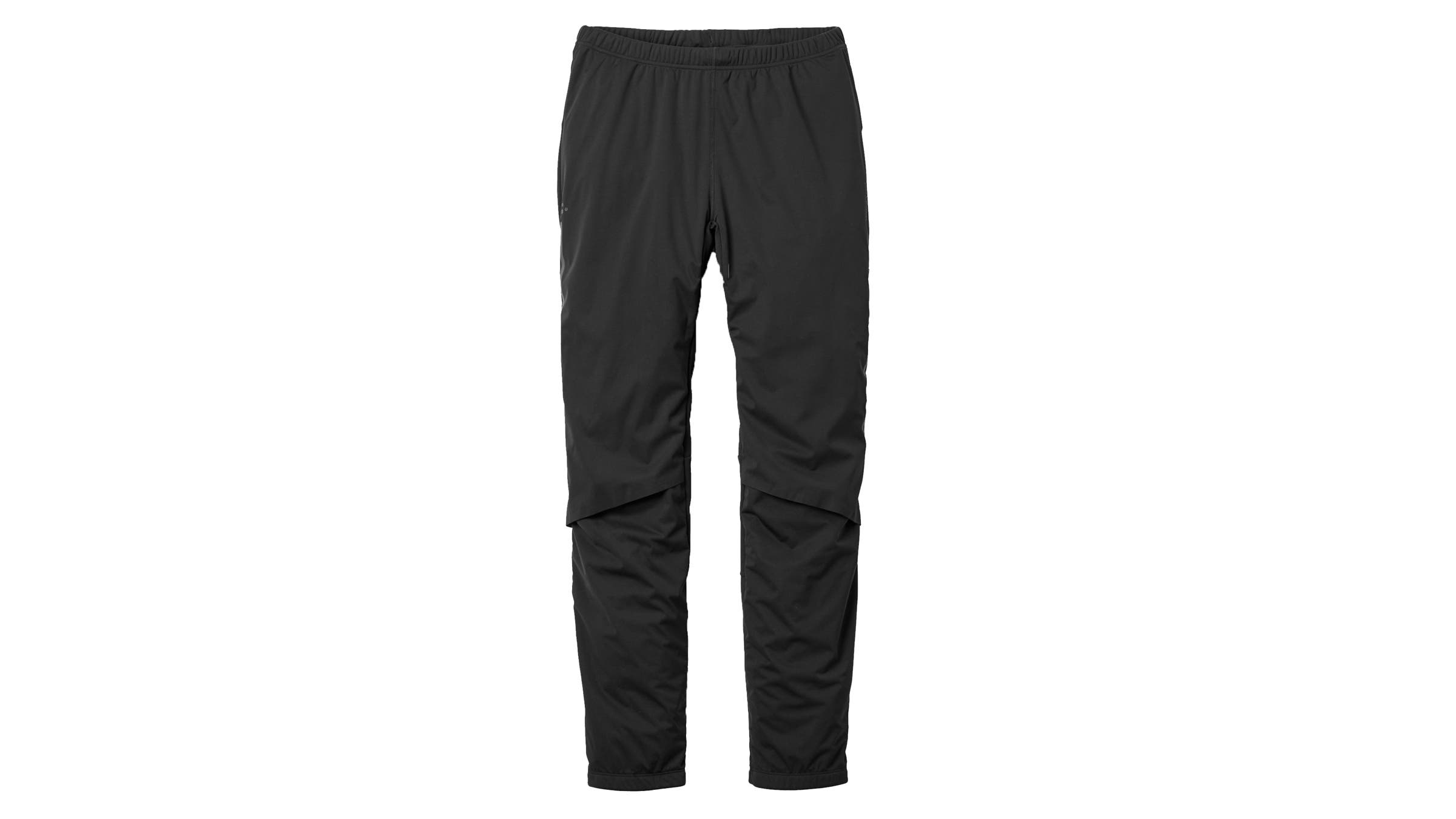
Best Men’s Training Pants
Craft ADV Nordic Training Pants
Sizes: S to XXL
Pros and Cons
+ Great for cold temps
+ Easy on/off
– Small sizing
You’d be hard-pressed to find a serious Nordic skier who doesn’t have a pair of Swedish-designed Craft pants or tights in their closet. Protective from the wind and cold, yet still designed to move, the polyester ADV Nordic Training pants have a stretchy windproof panel along the entire front that opens below the knee to allow for maximum range of motion. The interior, meanwhile, is a warm, plush polyester fleece. These pants are so durable, breathable, and comfortable that one tester uses them for every ski outing unless she’s testing other pants. (While they’re men-specific, women can wear them too.) When temps dip below 20 degrees, she simply adds a base layer.
A drawcord waistband feels non-binding, and a calf zip makes the tights easy to quickly get into and out of. Reflective piping on the side of the leg offers increased visibility on after-dark skis.
Overall, this is a cozy, comfortable must-have tight for skiing in any climate.
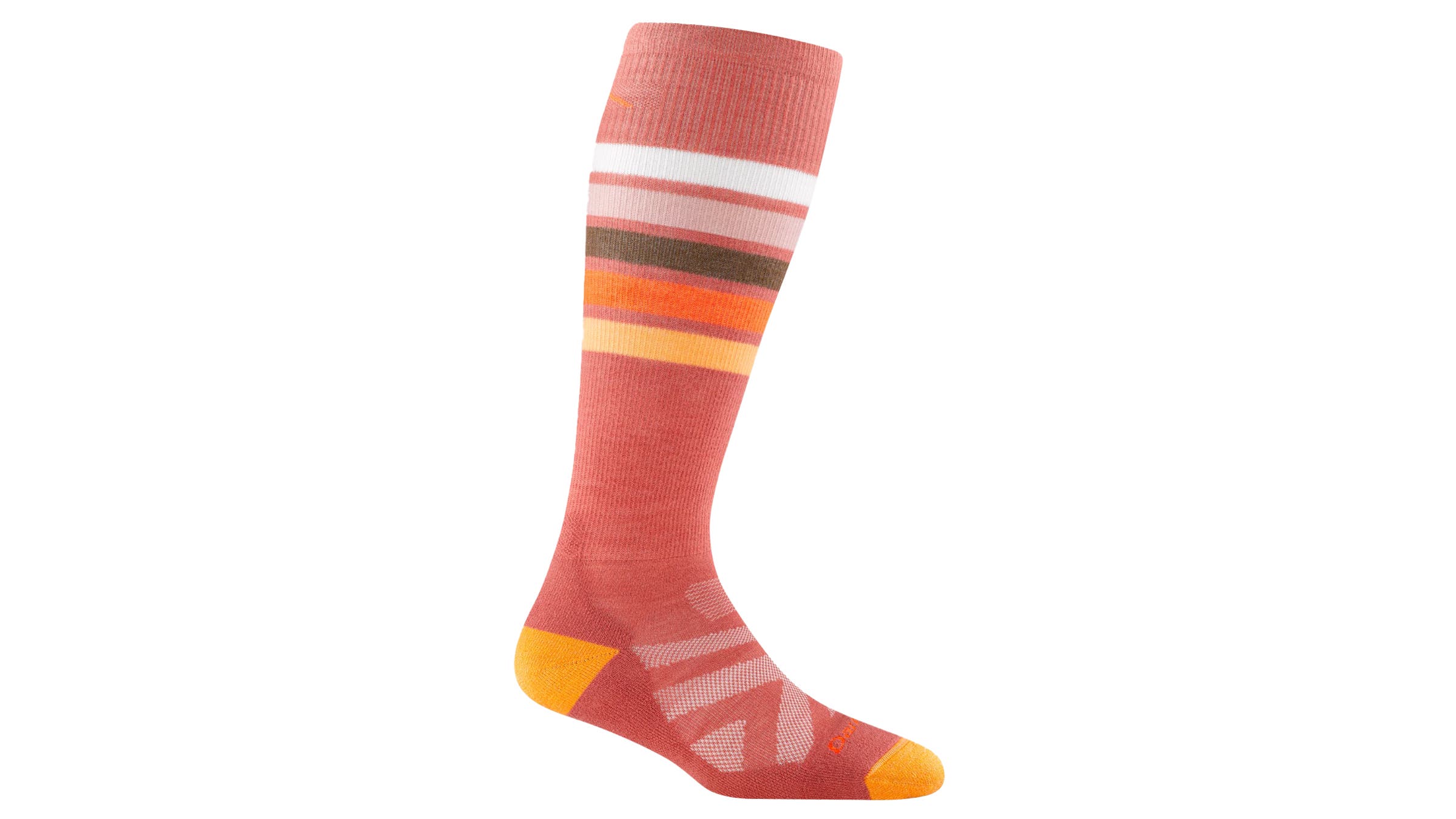
Best Ski Sock
Darn Tough Women’s Snowburst Over-the-Calf Midweight Ski & Snowboard Sock
Sizes: S-L (women’s); M-XL (men’s)
Pros and Cons
+ Comfy
+ Seamless the prevents bunching
– Not much compression
Of the six sock brands we tested this year, this classic, below-the-knee, midweight ski sock was a consistent favorite. Reinforced with slight terry-loop cushioning underfoot from heel to toe, the merino wool-nylon blend offers just enough padding to ease fatigue and add warmth, but not so much that the foot feels disconnected from the boot. Plus, the seamless toe construction eliminates weird bunching at the toe. All this for a $32 price tag seems like a fair price to pay for a well-constructed, knee-length ski sock that comes in bright, beautiful, eye-catching patterns.
“I was hesitant at first because I am not an over-the-calf sock girlie,” said one tester, echoing a consistent sentiment for Nordic skiers, who generally wear mid-calf socks. “But I was pleasantly surprised that they were not too tight and stayed up the entire ski. No rolling, bunching, or any discomfort!”
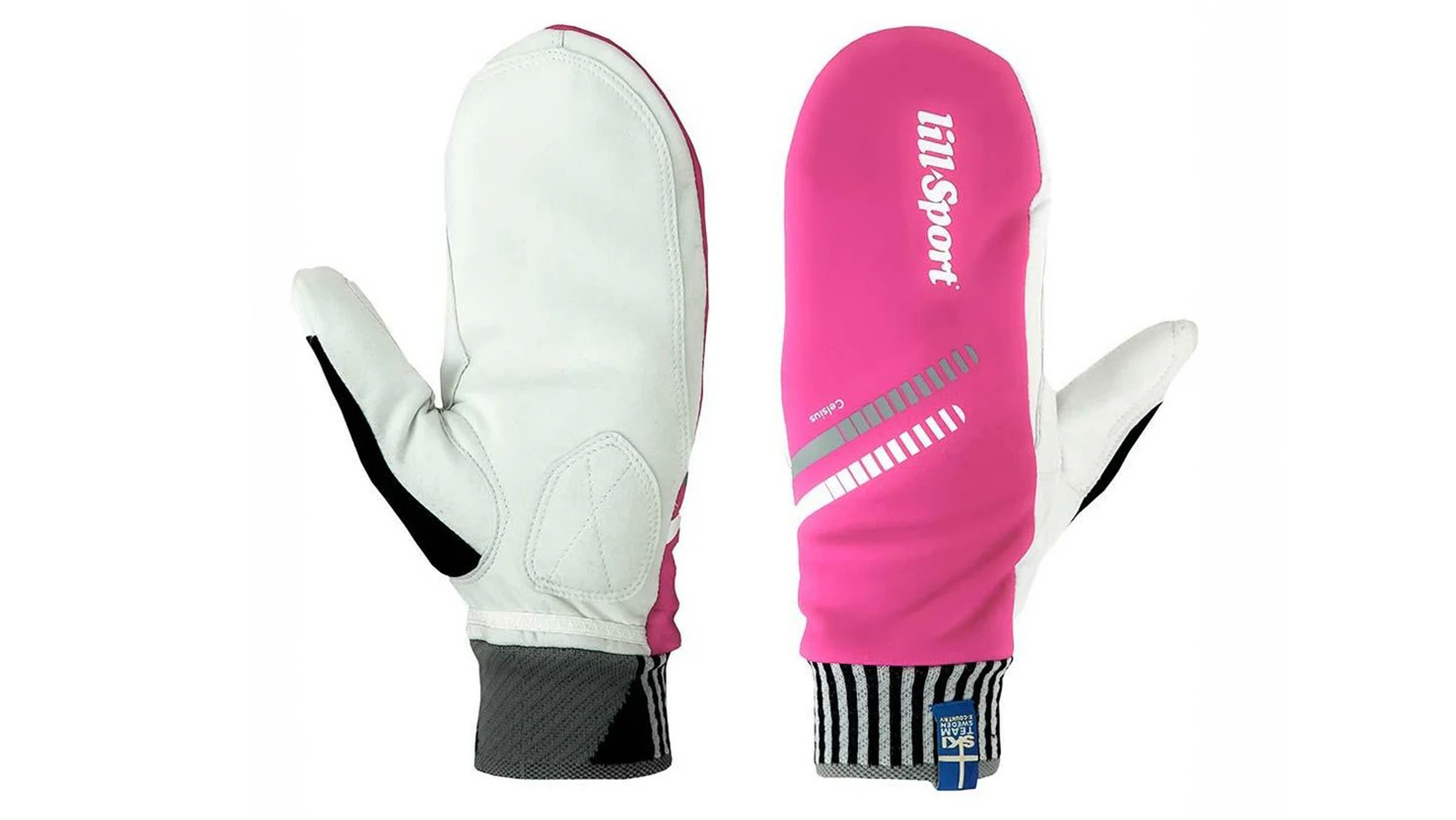
Best Ski Race Mitt
Lill-Sport Celsius Race Mitt
Sizes:5-12
Pros and Cons
+ Beautifully made
+ Machine washable
– Fit is long for some hands
Keeping hands warm on a cold day is one of the biggest challenges of skate skiing. A good pole plant requires a firm connection to the pole and, while adjustable, most pole straps are designed for slim-fitting gloves that don’t always keep your digits warm. Enter the Celsius Race Mitt—a warm, albeit slim mitt that fits more like a glove because it lacks the puff of most mitts.
Designed in Sweden and manufactured in Poland, Lill-Sport gloves are renowned for being high quality (and made by people who actually ski). The back of the hand is made from a three-layer breathable, windproof synthetic fabric, and the palm is made from durable synthetic leather that maintains its flex even in the coldest, wettest weather. The index finger, thumb, and palm are reinforced to increase durability while minimizing blisters, and the knitted cuff doesn’t bunch up into the pole straps.
One of our testers who suffers from Reynaud’s Disease, a condition in which hands and feet turn white and numb in cold temperatures, was duly impressed with the Lill-Sport Celsius on a 37-degree day. “As someone who typically wears very warm gloves in just about all skiing weather, I was pleasantly surprised that these gloves were a comfortable, light fit that kept my hands plenty toasty on a warm winter day.”
How to Choose XC Ski Accessories
For first-time buyers, we always recommend going to a shop devoted to cross-country skiing, or one that has a knowledgeable sales person who cross-country skis. It takes a professional to help you fit boots and poles, and guide you toward the warm but breathable clothing you will need.
Clothing
Skate skiing is a highly aerobic endurance sport often performed in sub-freezing temps, so it’s good to have a sense of how your body handles cold (and heat). This is a sport in which you’ll get surprisingly sweaty, surprisingly quickly. Plus, a few other basic accessories make skate skiing more comfortable.
- Sweat a lot? Prioritize breathable fabrics and wear less than you think you’ll need
- Get cold easily? Wear an extra layer on the top or bottom, but also look for ski pants with built-in wind protection and a jacket that has panels of insulation while still being breathable.
- One of our testers has Raynaud’s Disease, a condition that turns toes and fingers numb in response to cold temperatures. Her hack is to always wear mittens (with a handwarmer) instead of gloves—and once she starts skiing, she doesn’t stop.
- A good pair of sunglasses protects eyes from ski poles, bad wipeouts, and the intensity of the cold. It’s also smart to rub Dermatone Skin Protector Balm ($9) on exposed parts of your face: With SPF 23, the non-greasy formula protects from sun, wind, cold, chapping, and frostbite.
- A headband or hat is also a must. Some skiers prefer a wide, sweat-wicking headband that protects the ears while also allowing heat to dissipate from the head; others prefer full protection from a hat. When either are used in combination with a neck warmer, your face is protected.
Boots
Like any footwear required for an endurance sport, comfort comes first. Sure, a stiff carbon boot can transfer power to the skis and propel you forward, but it’s not much fun if you’re in misery. That said, like an alpine boot, your feet need to fit snug or else you lose control of the ski. If your foot is swimming around in the toe box, for example, it’s tough to efficiently push off and execute clean skating technique. Or if your heel slips in the back, you may end up with a big, red blister at the end of the day.
World Cup-level skate boots have a full-carbon outsole. It makes the boot much stiffer but also much more efficient in transferring power to the ski, so your body and ski work together in tandem. Carbon technology, however, also substantially increases the price of the boot. While there’s nothing more fun than executing powerful ski technique, a hybrid sole that combines carbon with plastic will probably work just fine for most skiers.
A well-insulated boot adds comfort and keeps your feet warmer. But if you tend to ski in warmer climates and don’t need a lot of insulation, there is also the option, as in cycling, to add a boot cover for the rare cold day.
Poles
When buying poles, you should consider four factors: swing weight, weight, stiffness, and strength. “Swing weight” refers to the pendulum motion of each pole stroke. Weight near the tip of the pole requires more energy from the skier than weight near the top of the pole. Considering the average ski racer makes about 30 to 45 pole plants per minute, swing weight, if poorly distributed, can fatigue arms over time. Most skiers, however, are not going to notice the swing weight while buying poles and will likely need to rely on a pole that provides the best weight-to-strength-to-stiffness ratio, which will almost always be a carbon pole.
Another important factor is the grip. You need to be able to comfortably hold your pole over a long period of time. An awkward grip can make for a long day on skis and ultimately lead to issues like blisters or arthritis. The material of the grip matters: Cork decreases vibration and resists moisture, while the foam is soft.
Finally, a lot of time and energy can be lost in skate skiing if you have a loose or sloppy strap. It’s important that the strap fits securely so that you can grip the pole while planting yet still allow enough range of motion to release the pole as you push off the ski and glide forward. But the more secure a pole is, the more difficult it can be to take it off to adjust a ski. That’s why it’s ideal to have a system where the strap clicks on and off the pole without having to unstrap and yank out your mitt.
How We Test
- Number of testers: 4
- Number of products tested: 117
- Number of kilometers skied: 587
- Warmest day: 40 degrees in Duluth
- Coldest day: 2 degrees in Duluth
- Earliest Start: 4 am wakeup for Jen Pearson, a course forerunner at the American Birkebeiner in Wisconsin
- Longest Day: 50-kilometer skate race for Ellie Hoffman at the American Birkiebiener
Our Duluth, Minnesota-based volunteer testers skied as many days as they could from January through April—not only because they love the sport, but also because some were training for major events and needed to log kilometers. Over the four-month testing window, we skied on manmade snow in the early season, in near-zero conditions on icy hardpack mid-winter, on a few inches of freshly rolled snowfall, and in sun-baked corn in the spring.
With a few dozen trails within an easy two-hour drive of Duluth, we skied all kinds of terrain, from the steep hills of Giant’s Ridge, a 63-kilometer trail system originally designed as a training center for the U.S. ski team, to the notoriously brutal hills of the American Birkebeiner course from Cable to Hayward, Wisconsin. Some days we had only an hour to hit the always immaculately groomed, surprisingly tough and hilly 3.3k snowmaking course at the local ski hill, Spirit Mountain. The common denominator was that no matter where we skied or in what temperature or conditions, the world always looked brighter after a good ski.
Meet Our Testers
Category manager Stephanie Pearson grew up in Duluth, Minnesota, cross-country skiing out her backyard. She started at Outside as an intern in 1995 and has worked on staff and as a contributing editor for three decades. She’s also a National Geographic Explorer.
Kelly Bastone moved to the Colorado Rockies in 1998 and has pursued outdoor sports ever since. A freelancer who writes about gear and other outdoor topics for publications such as Backpacker, AFAR, and The Red Bulletin, Bastone has contributed many gear reviews to Outside over the years. An avid skier (resort, Nordic and backcountry), fly-fisher, mountain biker and mushroom forager, she gets the news she needs from the weather report.